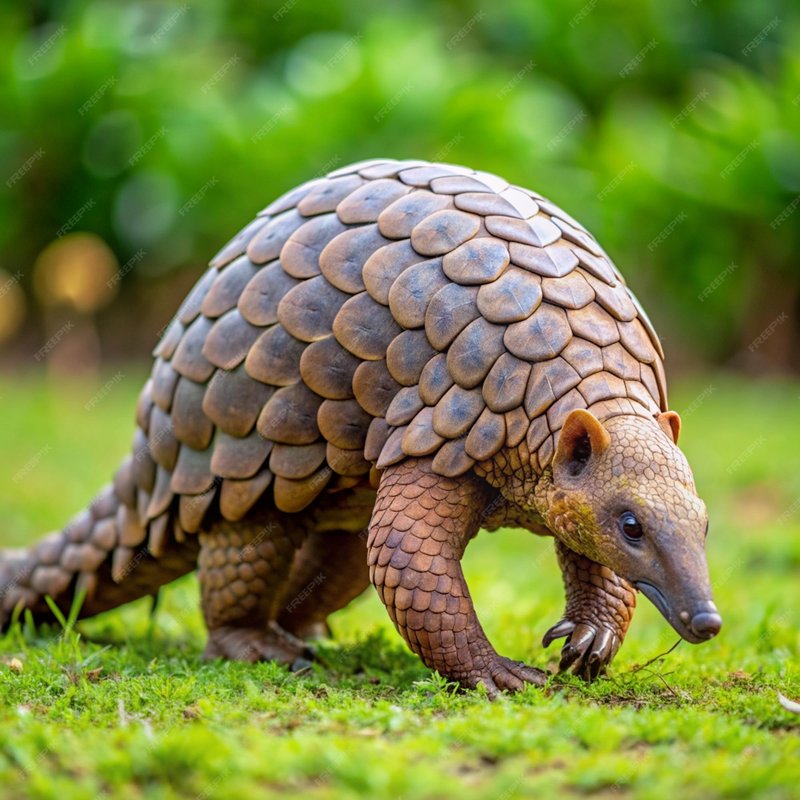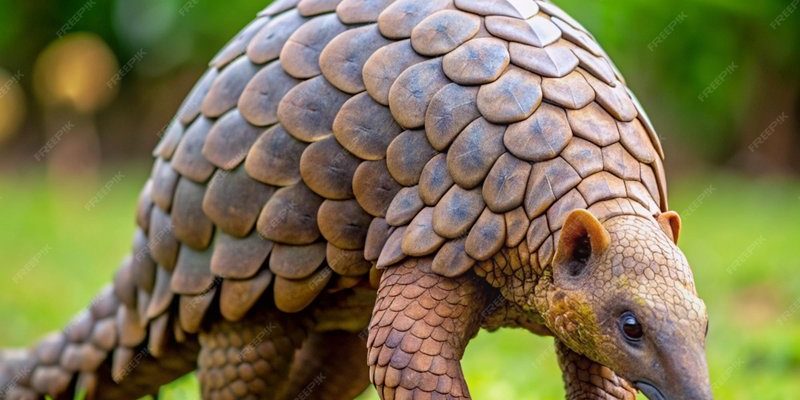
Pangolins are one of the most distinct mammals out there, covered in hard, protective scales made of keratin—yes, the same stuff that makes up our hair and nails. These little guys are nocturnal and spend their nights searching for ants and termites, using their long, sticky tongues. With a diet focused largely on insects, they help regulate insect populations, which can become a problem if left unchecked. In many ways, the Indian pangolin is like nature’s pest control, ensuring balance in its environment.
As we dive deeper into the world of the Indian pangolin, you might be wondering about its habitat, feeding habits, and the challenges it faces. Understanding how this unique creature operates helps highlight its significance in biodiversity and conservation. Let’s explore these aspects together.
The Habitat of the Indian Pangolin
Indian pangolins are found primarily in forests, grasslands, and scrublands across the Indian subcontinent. They thrive in a variety of environments, from tropical rainforests to dry deciduous forests. This adaptability is key to their survival, allowing them to find food and shelter wherever they can.
These habitats are not just homes for pangolins; they are rich ecosystems teeming with life. By digging extensive burrows, pangolins not only create a safe space for themselves but also promote soil aeration and nutrient cycling. This activity benefits the larger community of plants and animals, creating a healthier ecosystem.
You might be surprised to learn that as they burrow, pangolins help control erosion. This is particularly important in areas where vegetation cover is limited. With the rising threats of habitat loss due to urbanization and agriculture, the pangolin’s role as a keeper of soil health is more essential than ever.
The Feeding Habits of Indian Pangolins
One of the most captivating aspects of the Indian pangolin is its feeding habits. As insectivores, they primarily feast on ants and termites. With their strong sense of smell, pangolins can locate ant hills and termite mounds with ease. Here’s the fascinating part: they have specialized adaptations that make them perfect for this diet.
First off, those long, sticky tongues? They can extend up to 16 inches, allowing pangolins to reach deep into tunnels made by ants or termites. Plus, their mouths don’t have teeth! Instead, they rely on their stomachs, which are muscular and designed to grind up food with the help of small ingested stones. Talk about efficient!
By preying on these insects, Indian pangolins help keep their populations in check. If left unchecked, ants and termites can cause significant damage to crops and the environment. It’s almost like they’re tiny superheroes, working tirelessly to maintain balance in nature.
The Indian Pangolin and Soil Health
So, how does the Indian pangolin impact soil health? Their burrowing habits, as mentioned earlier, play a crucial role in this. When they dig, they loosen the soil, allowing for better air and water penetration. This is critical for plant roots, which rely on healthy soil to absorb nutrients and thrive.
Additionally, the organic matter that pangolins leave behind—like undigested insect remains—acts as a natural fertilizer. This enriches the soil and promotes plant growth. Think of it like a composting process, where nature recycles nutrients for the next generation of plants.
Moreover, their burrowing activity creates homes for other species. Small mammals, reptiles, and even insects may take shelter in these burrows, creating a bustling community and enhancing biodiversity. A healthy ecosystem needs variety, and pangolins are unwittingly supporting that variety every time they dig.
The Role of Indian Pangolins in Pest Control
Pest control is often a term we associate with human intervention—think pesticides and traps. However, the Indian pangolin fulfills an essential role as a natural pest controller. Their diet primarily consists of ants and termites, which can wreak havoc on crops and gardens.
By consuming these insects, pangolins help manage their populations and prevent outbreaks. This is particularly important in agricultural settings, where farmers may rely on natural predators to reduce their reliance on chemical pest controls. A balanced ecosystem, with species like the Indian pangolin, can mitigate the need for human-made interventions.
Interestingly, during the monsoon season, ant populations can explode. This is when the pangolin’s role becomes even more critical. By keeping these colonies in check, they help maintain agricultural productivity and reduce the risk of crop damage. It’s a simple yet effective way nature takes care of itself.
Threats Facing the Indian Pangolin
Despite their many contributions, Indian pangolins face significant threats. Chief among these is poaching. Unfortunately, the demand for pangolin scales in traditional medicine and as delicacies in certain cultures has led to a troubling decline in their populations. It’s heartbreaking to think about how such a harmless creature is targeted for its unique features.
Habitat loss is another pressing concern. As forests are cleared for agriculture and urban development, the pangolin’s home is disappearing. This loss not only affects pangolins but also the entirety of the ecosystem they help support. Their decline leaves a gap that can lead to an imbalance, impacting other species and the environment.
Conservation efforts are underway, but more awareness is needed. Each of us can play a role by supporting wildlife protection initiatives and advocating for sustainable practices. Simply spreading the word about the importance of the Indian pangolin can help create a ripple effect toward their preservation.
The Importance of Conservation for Ecosystem Health
Conserving the Indian pangolin is crucial—not just for the species itself, but for the health of the entire ecosystem. When we lose a species that plays such a significant role in pest control and soil health, we risk creating an unstable environment.
Healthy ecosystems not only benefit wildlife but also support human livelihoods. From agriculture to tourism, the interconnectedness of life is quite profound. We depend on these systems to provide clean air, water, and resources. Protecting the Indian pangolin means protecting our future.
Let’s not forget, every little action counts. Whether it’s participating in local conservation efforts, educating ourselves and others, or simply appreciating the beauty of nature, we can make a difference. It’s all about being mindful of our impact on the world around us.
In closing, the Indian pangolin is more than just a curious creature. Its role in the ecosystem is complex and vital. By understanding and appreciating its contributions, we can better advocate for its protection and the health of the environment. So, next time you think of wildlife conservation, remember the small but mighty pangolin—our unsung hero in maintaining balance in nature.

